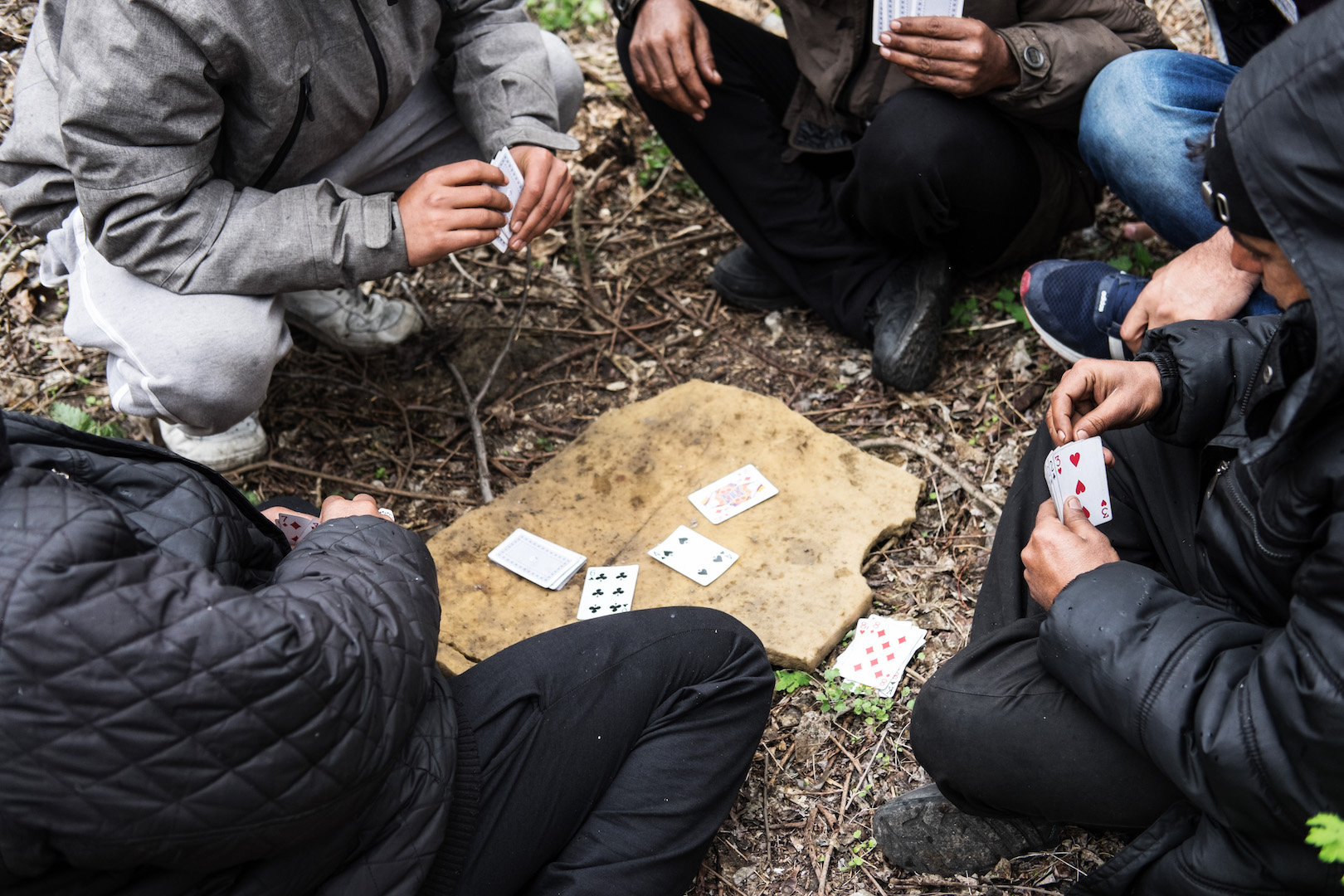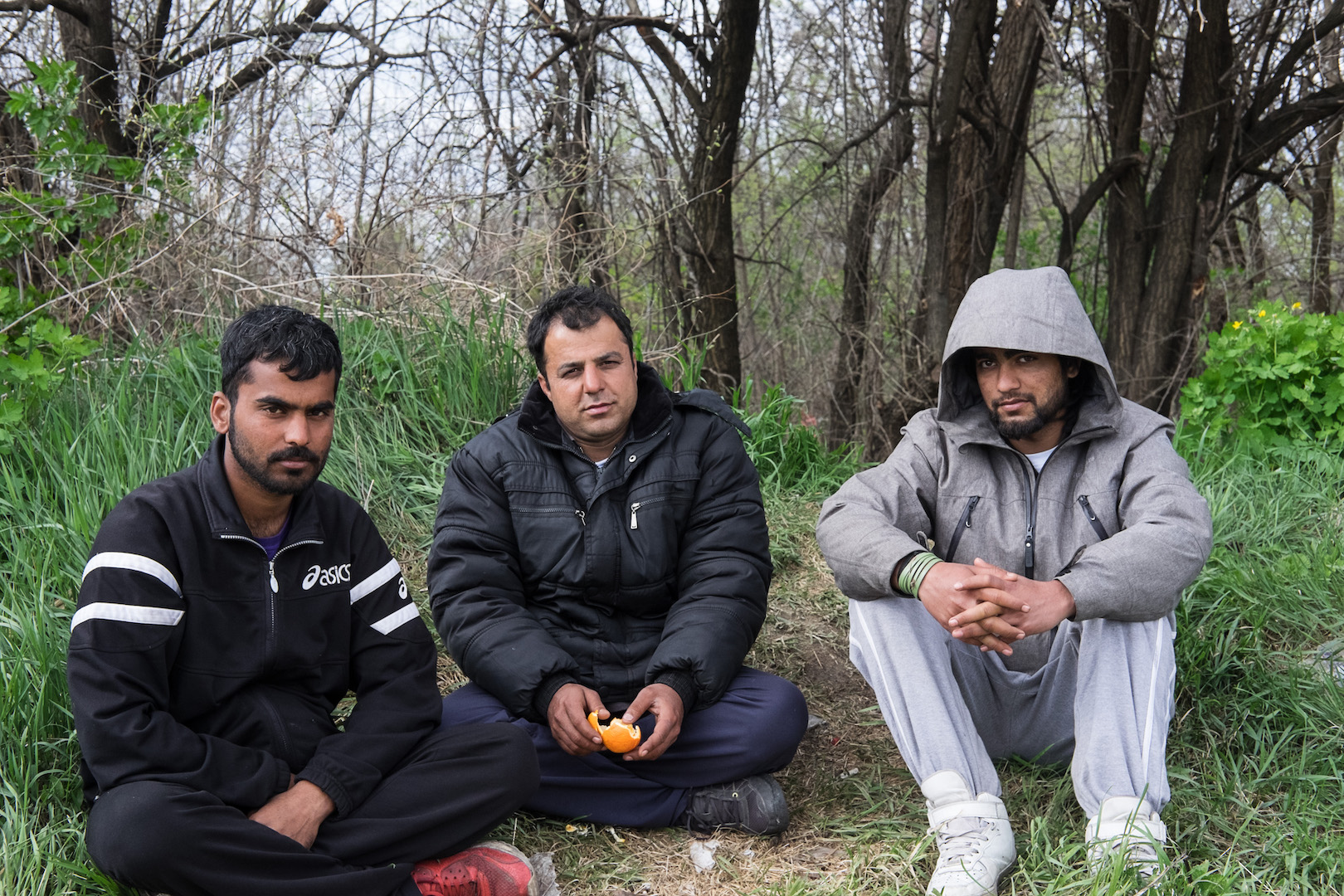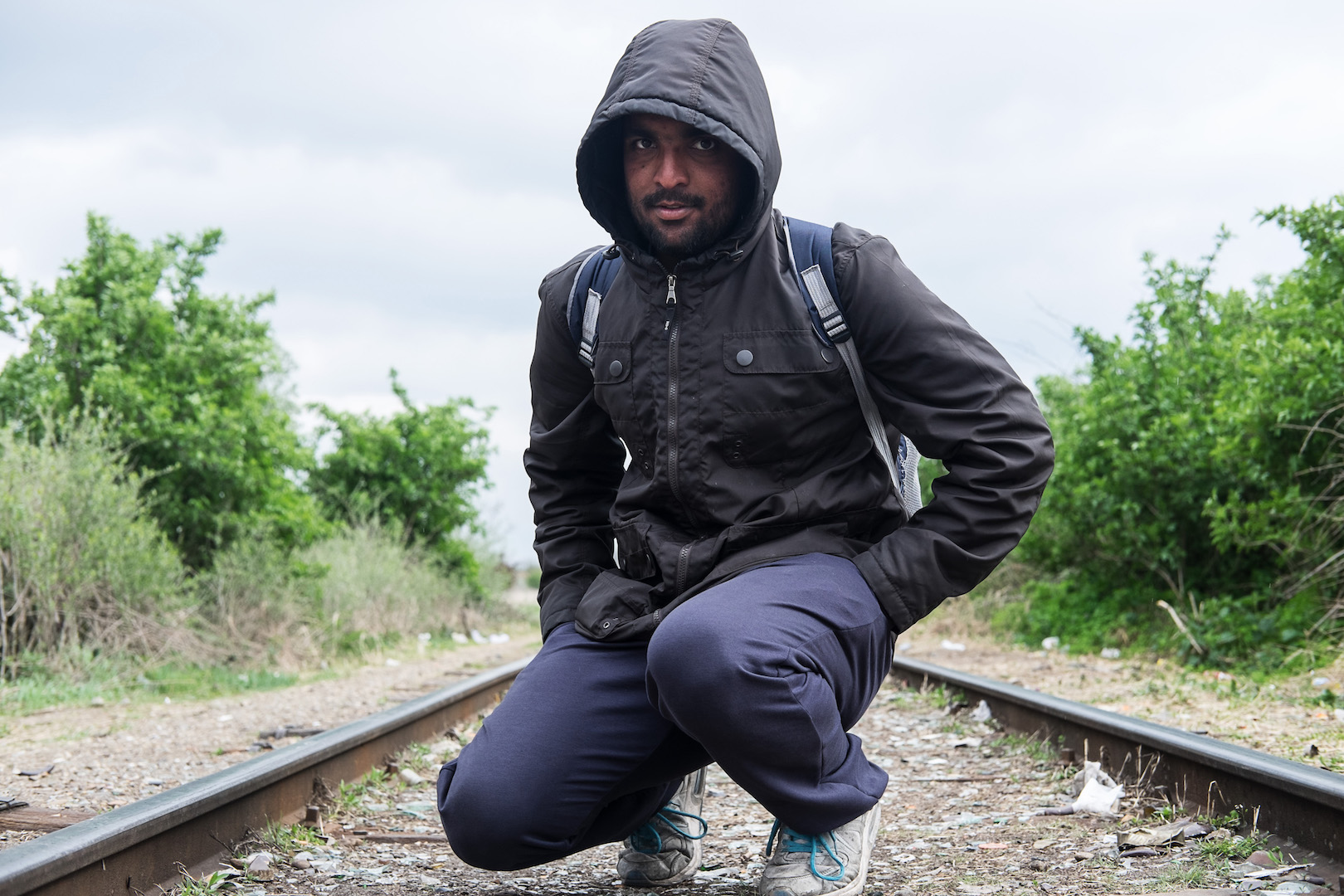Fierce anti-migrant rhetoric, the construction of a second border fence in March and the installation of motion sensors have done a lot to deter asylum seekers attempting to cross illegally into Hungary, but it hasn’t stopped a desperate few.Small groups of asylum seekers, mainly from South Asia, are hiding in the woods of northern Serbia in the hopes of crossing the Hungarian border and traveling onwards into the greater European Union. In February, hundreds gathered on the border in the hope that they might sneak past the guards and further their dream of reaching western Europe. Most have now admitted defeat – fearful of harsh beatings and the possibility of being detained in closed container camps.The Croatian and Romanian borders are now seen as the only viable entry points into the EU, and dozens of makeshift camps have sprouted up across the borders as a result, most notably in Šid on the Croatian border of western Serbia. But on the Hungarian border near the town of Subotica, around 50 unregistered asylum seekers hold out hope that a new entrance point will reveal itself.The few remaining migrants on the Hungarian border are difficult to find, having taken to hiding deep in the woods. Behind a disused factory on the outskirts of the Serbian city of Subotica, a dirt track leads past train tracks and into the woods, opening out onto newly sown fields and dense trees. When VICE News visited the area in early April, evidence of recent food consumption led straight to the demoralized few holding out in the woods hoping for a better life. Spring brings relief — the group doesn’t have to deal with freezing temperatures anymore, but they still battle strong winds and occasional torrential downpours.Under the shelter of the trees, some asylum seekers from Pakistan play cards around a fire. Two tents, bracketing a square of blankets used as a cooking and socializing space, flap helplessly in the wind.“First we lived in the Barracks in Belgrade, then we came here to try for the Hungarian border. Things are different now,” say two Pakistani asylum seekers, Anam and Bisma. “We have been here three months now and people did make it across, but the last three to four weeks it’s impossible.”The conversation turns to the Hungarian border guards’ alleged cruelty. “It was deep, deep snow last time we tried. We got past the fence and around 10km [6 miles] into Hungary. Then we saw the lights of police cars. In an open field of snow, we were fucked. What could we do. They could find us even if we ran. The police lined all 40 of us up and took turn[s] to beat us on the legs, arms, and stomach.”
Spring brings relief — the group doesn’t have to deal with freezing temperatures anymore, but they still battle strong winds and occasional torrential downpours.Under the shelter of the trees, some asylum seekers from Pakistan play cards around a fire. Two tents, bracketing a square of blankets used as a cooking and socializing space, flap helplessly in the wind.“First we lived in the Barracks in Belgrade, then we came here to try for the Hungarian border. Things are different now,” say two Pakistani asylum seekers, Anam and Bisma. “We have been here three months now and people did make it across, but the last three to four weeks it’s impossible.”The conversation turns to the Hungarian border guards’ alleged cruelty. “It was deep, deep snow last time we tried. We got past the fence and around 10km [6 miles] into Hungary. Then we saw the lights of police cars. In an open field of snow, we were fucked. What could we do. They could find us even if we ran. The police lined all 40 of us up and took turn[s] to beat us on the legs, arms, and stomach.” “After 2–3 hours of beating and insults they drove us to the border with Serbia and just kicked us out shouting ‘Go on fuck off’ and other bad things in their language,” says the pair. “Our group was lucky. I had a friend who was with another group and the Hungarians beat him, put water on him then took one shoe. Imagine walking back, beaten and with one shoe in the snow.”Anam’s and Bisma’s stories were similar to others who shared their stories with VICE News. These stories of abuse and cruelty have spread unabated across Serbia, scaring many would be asylum seekers away from Hungary. Human Rights Watch and other rights groups have documented several cases of brutality eked out by Hungarian border guards against refugees, though government officials have consistently rejected these claims.The men say they left Pakistan because of the country’s problems with terrorism, corruption, unemployment and a disregard for human rights.“When will the borders open?” was the one pressing question asked by all the asylum seekers with whom VICE News spoke.There are currently an estimated 8,000 asylum seekers in Serbia alone and more are expected to arrive in the coming months. April has seen Serbian police rounding up hundreds of unregistered migrants along the borders and placing them in official camps. But with the legal process of asylum taking many months or even years, many pin their hopes on crossing illegally into countries like Italy.“Once we are in Italy we can get the papers, no problem. Then no one can deport us back to Bulgaria. We stay in Italy and then after a few years can go anywhere.”
“After 2–3 hours of beating and insults they drove us to the border with Serbia and just kicked us out shouting ‘Go on fuck off’ and other bad things in their language,” says the pair. “Our group was lucky. I had a friend who was with another group and the Hungarians beat him, put water on him then took one shoe. Imagine walking back, beaten and with one shoe in the snow.”Anam’s and Bisma’s stories were similar to others who shared their stories with VICE News. These stories of abuse and cruelty have spread unabated across Serbia, scaring many would be asylum seekers away from Hungary. Human Rights Watch and other rights groups have documented several cases of brutality eked out by Hungarian border guards against refugees, though government officials have consistently rejected these claims.The men say they left Pakistan because of the country’s problems with terrorism, corruption, unemployment and a disregard for human rights.“When will the borders open?” was the one pressing question asked by all the asylum seekers with whom VICE News spoke.There are currently an estimated 8,000 asylum seekers in Serbia alone and more are expected to arrive in the coming months. April has seen Serbian police rounding up hundreds of unregistered migrants along the borders and placing them in official camps. But with the legal process of asylum taking many months or even years, many pin their hopes on crossing illegally into countries like Italy.“Once we are in Italy we can get the papers, no problem. Then no one can deport us back to Bulgaria. We stay in Italy and then after a few years can go anywhere.” The journey to Italy from Serbia is fraught with danger. Hiding in container compartments of trains and underneath lorries is difficult and dangerous, and many have died from being crushed — recently two people were electrocuted as they tried to climb atop moving trains. Even if they make it to Croatia’s capital Zagreb, there is no certainty they will pass on to Italy. People have been deported back to Serbia from Zagreb and Ljubljana only to try again the next week.
The journey to Italy from Serbia is fraught with danger. Hiding in container compartments of trains and underneath lorries is difficult and dangerous, and many have died from being crushed — recently two people were electrocuted as they tried to climb atop moving trains. Even if they make it to Croatia’s capital Zagreb, there is no certainty they will pass on to Italy. People have been deported back to Serbia from Zagreb and Ljubljana only to try again the next week.
Advertisement

Advertisement

Advertisement

The borders can get tighter, fences can get higher, border security forces can use more aggressive tactics, but none of this will successfully end the flow of asylum seekers attempting to come to the EU. The average person from Pakistan or Afghanistan claims to have invested around €10,000 to get to Serbia and they refuse to consider giving up on their European dream.In an increasingly divided Europe, there still appears to be no workable solution to the ongoing refugee crisis. The only certainty is that thousands more will arrive each month this summer and wait on the European Union’s door for their chance to gain asylum in a western European country. The woods on the Hungarian border may not empty for some time yet.“We will not go back, not deport, not live in Serbia or Bulgaria. We will keep trying and inshallah one day I will be in Germany, France or even Belgium.”